by Erica Gagnon, Former Collections Researcher
(Updated January 28, 2022)
Introduction: The Immigration Boom to the Canadian West
From 1867 to 1914, the Canadian West became home to millions of immigrant settlers seeking a new life. Their resettlement in the region was underpinned by the displacement of Indigenous peoples. The resulting immigration boom created key industries still important to Canada’s international role – like agriculture, mining, and oil. The Prairie Provinces of Manitoba, Saskatchewan, and Alberta grew rapidly in these years as settlers began to transform the Prairie flatland and establish unique cultural settlements. Many motivations brought immigrants to Canada: greater economic opportunity and improved quality of life, an escape from oppression and persecution, and opportunities and adventures presented to ‘desirable’ immigrant groups by Canadian immigration agencies. By examining these motivations, we can better understand Prairie immigration experiences and the evolution of settlement patterns.
The immigration boom leading up to 1914 was one of the most important periods of Canadian population growth. Several significant changes occurred in Canada after 1867 that made the Prairie immigration boom possible. In 1871, the Canadian government entered into Treaty 1 and Treaty 2 to secure consent from Indigenous nations of those lands for immigrant settlement and for the development of natural resources. The Dominion Lands Act of 1872 created free and fertile homesteads (of 160 acres) for settlers from land previously inhabited by Indigenous peoples. The establishment of the North-West Mounted Police in 1873 guaranteed the safety of Prairie settlers and further dispossessed Indigenous residents. The creation of the Department of the Interior in 1873, helped to attract economic immigrants, and established the minister responsible as “…the Superintendent General of Indian affairs, and… have the control and management of the lands and property of the Indians in Canada.”[1] The construction of a transcontinental railroad made transportation and travel accessible greatly expanding European settlement in the Prairies and further entrenched settler colonialism in Western Canada.
In 1870, no urban centres existed on the Prairies. By 1911, thirteen cities with populations over 5,000 had been established.[2]
Immigration After 1896 with Clifford Sifton, Minister of the Interior
While the period after 1867 saw a rise in international immigration, the movement did not fully take off until 1896. After a tough economic recession from 1873 to 1896, Canada sought immigrant settlers. With the help of Clifford Sifton, Minister of the Interior from 1896 to 1905, immigrants began to be directed to the Canadian Prairies. Sifton is known for promoting the immigration of Eastern Europeans to Canada. He strongly believed that sturdy European immigrants were the best settlers for the challenging Prairies, because of their familiarity with agriculture, rural lifestyles, and harsh climates. Sifton’s perspective mirrored longstanding bureaucratic views about the ethnoracial superiority of white Europeans in Canadian society, while further entrenching the exclusion of Indigenous peoples and non-white European agriculturalists. Sifton retired from politics in 1911, but is perhaps best known for his 1922 statement that “a stalwart peasant in a sheep-skin coat, born on the soil, whose forefathers have been farmers for ten generations, with a stout wife and a half dozen children, is a good quality.”[3] He disliked the idea of metropolitan populations settling the Prairies, for they would congregate in cities, instead of developing Prairie homesteads. Instead, he promoted the immigration of groups like the Ukrainians, Hungarians, and Mennonites over the more “desirable” British immigrants.
Due to intensive advertising and international immigration agencies after 1867, immigrants began to settle the Prairies. These immigrants fostered distinct ethno-cultural pockets and diverse industries in Manitoba, Saskatchewan, and Alberta. As a result, the population in the West exploded; Winnipeg grew from a city of 20,000 in 1886, to 150,000 in 1911.[4]
Saskatchewan’s population grew by 1124.77% between 1891 and 1911.[5]
Opportunities in Canada for Eastern European Agriculturalists
Thousands of diverse immigrants came to Canada between 1867 and 1914 for different reasons. For immigrants who were inspired to emigrate in search of greater economic opportunities and improved quality of life, the Canadian West presented seemingly infinite possibilities. This category of immigrants included populations of Hungarians, French, Icelanders, Romanians, Chinese, and Ukrainians among other groups.
Economic and social situations in Europe were increasingly challenging in the mid to late 1800s. During this time, Europe’s population was growing at an unprecedented rate and death rates were decreasing, leading to a population surplus. This resulted in work shortages and competition for resources. Political tensions in Europe also ran high in the late 1800s, as empires reorganized and borders shifted.
For many Hungarians, Romanians, and Ukrainians, overpopulation and unemployment prompted their migration to the Canadian West. Many of these “Sifton” immigrants were farmers, well-known for their ability to survive harsh climates. After decades of landless tenant occupation on tiny farms in Europe, free 160 - acre homesteads in the Canadian West appealed to Eastern European agriculturalists. Hungarians left Austria-Hungary after neglect from the government, and while many came to Canada, most moved to the United States. Romanians and Ukrainians, however, moved in large numbers to Western Canada.
Romanian, Ukrainian, and French Immigrants
Romanian immigrants began arriving in 1895, and like many other “Sifton” immigrants, the Prairies were their first and ultimately permanent home. Over 8,000 Romanians not only succeeded agriculturally, but also possessed trade labour skills, meaning that they were considered valuable Prairie immigrants.[6] Ukrainians were also an immigrant group valued for their skills. Between 1896 and 1914, an estimated 170,000 Ukrainians came to Western Canada and were arranged in block settlements.[7] Block settlements were compact settlements populated by a specific ethnocultural group, which created a patchwork of ethnocultural zones on the Prairies.[8] Although a lack of agricultural awareness had hindered Ukrainian communities in Europe, it actually helped Ukrainian-Canadian populations succeed on the Prairies, where the lack of agricultural development required knowledge of pioneer farming techniques.
Canada represented a second chance for many immigrants. For many French, Icelanders, and Chinese, unfavourable environmental conditions added to their desire to relocate. French immigrants had often lived in other areas of North America before moving to the Canadian West. French migration to the Prairies came from eastern Canada, as well as New England, and the western United States. French populations favoured settlement in Manitoba, where distinct French communities had already been established by French fur traders and the Métis, well before Confederation.
Icelandic and Chinese Immigrants
Did you know? Manitoba has the largest concentration of Icelanders outside of Iceland’s capital city, Reykjavik.
While overpopulation, underemployment, and poor treatment of rural farmers were the primary motivations for immigrants coming from Iceland and China, these groups were also pushed to emigrate by unique environmental conditions. Approximately 16,800 Icelanders left for North America between 1871 and 1915, the majority of whom came to settle in block settlements in Manitoba. Most of these immigrants came from the agriculturally depressed region of northeast Iceland, which was further affected by a number of detrimental volcanic eruptions in the 1870s that caused remaining arable land to be covered in debris.
Chinese immigrants experienced a similar fate. Over 15,000 Chinese immigrants came from China and the United States to help construct the Canadian Pacific Railway during the 1880s. The majority of these Chinese immigrants originated from Taishan, in Guangdong province, which had been repeatedly ravaged with floods, earthquakes, plagues, typhoons, droughts, and civil wars during the late 1800s. Chinese and Icelandic immigrants saw Canada as a land of refuge with ample opportunities for a better life.
The Migration of Oppressed and Persecuted Groups
The opportunity for a better life in Canada was also sought after by many “undesirable” immigrant groups, who took advantage of the Sifton period of liberalized immigration to escape their plight in their old homelands. Survival and freedom were the motivations of oppressed and persecuted populations like Black American, Doukhobor, Jewish, Mennonite, and Mormon immigrants. For them, the Canadian Prairies represented a safe place to resettle.
The Black Americans and Mormons, both American-based populations, came to Western Canada to escape the discrimination they had faced in the United States. After restrictive acts were imposed on Black Americans in Oklahoma in 1907, a group of 1,500 Black Americans fled to Canada, settling in Amber Valley, Alberta in 1910 and 1911. Despite this movement, the population of Black Americans on the Prairies was never as large as other groups, as Black populations were often barred entry, or tended to move into other urban metropolitan/more populated areas in Canada.
Immigrants Fleeing Religious Persecution, Russification
Mormons brought irrigation techniques to Canada that enabled thousands of people to farm dry lands in southern Alberta and Saskatchewan.
Mormonism was born in the United States in the 1830s, and faced major backlash from conservative Americans. The practice of polygamy in Mormon communities was met with serious disapproval by the majority population, and the American government passed laws to prohibit polygamy. Threatened by imprisonment and persecution, thousands of Mormons moved to southern Alberta in the 1880s, creating a thriving Mormon population of 7,000 by 1910.[9] In Alberta, many Mormons were scrutinized by the police and the public due to suspicions of polygamy, which was illegal in Canada.[10]
In Europe, as in the United States, governments implemented restrictive laws which prohibited many groups from living free and happy lives. For Jews, Mennonites, and Doukhobors, life in Europe became increasingly difficult towards the end of the nineteenth century.
Due to the failure of many rural settlements, the majority of Jews in Western Canada settled in cities. Winnipeg in particular became a thriving Jewish community in the early 1900s, where many successful Jewish businesses emerged. Still today, Winnipeg continues to be a centre for Jewish-Canadian life and culture.
What is Russification? It was an attempt to assimilate all peoples of the Russian Empire by forcing non-Russians to give up their own cultures, languages, and traditions, and adopt Russian language and culture.
When the Russian government imposed intense Russification in the late 1800s, Doukhobors and Mennonites experienced major violations of their cultural and religious rights. These peoples were imprisoned for their resistance to Russification and refusal to participate in the military. After their immigration to Canada, Doukhobors in Saskatchewan and Mennonites in Manitoba became some of the most successful Prairie farmers. The social impacts of these groups in Canada are also substantial; both Doukhobors and Mennonites introduced communal lifestyles and the practice of shared communal goods to the Prairies. Currently, the population of Doukhobors in Canada is twice that which remains in Europe, and Mennonites continue to be a dominant ethno-cultural group in Manitoba.
Immigrants Looking For Opportunity and Adventure
In the first six months of 1900, one million pieces of immigration literature flooded the European countryside.
Even though negative motivations pushed many immigrant groups away from their homelands, some groups came to Canada for opportunities and adventures presented to them by Canadian immigration agencies. Advertisements for the Canadian West were distributed in different European countries, and the recruitment of diverse desirable immigrants by Canadian immigration agents flourished. Some of the most ethnically and culturally desirable immigrants to Canada, between 1867 and 1914, were the British, Belgian, American, Polish, Dutch, German, Finnish, and Scandinavian agriculturalists.
While some of these “desirable” immigrants did become successful rural farmers, others struggled. Belgian immigrants were a unique settler group; despite cultural differences and often mediocre agricultural skills, they were considered desirable immigrants by Canadian immigration agents. Many Belgians spoke French, and as a result, settled in French areas of Manitoba, where they practiced a diversity of agricultural, skilled, unskilled, and resource labour.
“Desirable” Immigrants Protecting Canada’s “Britishness” and Succeeding in Agriculture
Despite their limited contribution to a skilled agricultural or trades-related workforce, the British were the most numerous and desirable immigrants to Canada. As Canada remained heavily influenced by the United Kingdom in the twentieth century, British immigrants (predominantly from Scotland and England after 1867) helped maintain a dominant white Anglo-Saxon presence in Canada. The failure of some British settlers to prosper in rural landscapes meant that they tended to congregate in more populated centres, where they added to the unskilled workforce. During the Sifton era, immigration had shifted away from an emphasis on British immigrants, but as new ministers came into office after 1905, the desire to preserve and protect Canada’s “British-ness” re-emerged.
Though some British immigrants displayed ineptitude on rural farming enterprises, many other desirable immigrant groups succeeded in Prairie agriculture. The Americans, Poles, Dutch, Germans, Finns, and Scandinavians all proved to be prosperous settlers. Interestingly, individuals from these immigrant groups often tried their luck in the American West before moving northward and settling permanently in Canada. Like the French, these groups encountered high land costs and overdevelopment in the American West, spurring their movements to Canada.
These groups were considered as highly desirable settlers by Canadian immigration agencies: they were familiar with the Prairie climate and land conditions from experience in the American West, and were culturally desirable immigrants with physical similarities to the Brits. They were also accustomed to democratic institutions, and while displaying high rates of cultural retention, they did not practice “questionable” customs (such as communal living or polygamy).
Dutch, German, Polish, and Scandinavian Immigrants
The Dutch, Germans, and Scandinavians were some of the most desirable and agriculturally skilled immigrants to the Canadian Prairies.
The Dutch and Germans were two of the most desirable Prairie settler groups in Canadian history. They were praised for their agricultural prowess and hearty work ethic. Both the Germans and Dutch established strong ethnocultural block settlements in the West. The Germans flocked mainly to Saskatchewan, and established two large colonies in the early 1900s. Germans from the United States settled in St. Peter’s colony, comprised of fifty townships, which had 7,000 people in 1914. European Germans favoured St. Joseph’s colony, comprised of seventy-seven townships, where the 1916 population hovered around 11,000.[11]
Like the Dutch and Germans, many Poles that settled in Western Canada came from agricultural backgrounds and were familiar with a harsher climate. Though Poles came in considerably larger numbers after the First World War, they still had a strong presence in the Prairies during the turn of the century. By 1911, there were over 30,000 Poles in Canada, many of whom were farmers in the West.
The ability of many Dutch newcomers to assimilate into the dominant culture made them favourable immigrants. Many Dutch immigrants already spoke English, from years in the United States, making them even more desirable in the eyes of the Canadian government. The Dutch settled predominantly in Alberta, where a large population still thrives.
Scandinavian groups, Danes, Norwegians, and Swedes came in their largest numbers to Canada between 1880 and 1900, mostly from the United States.[12] In fact, only 6,000 of the 40,000 Swedes to the Prairies between 1893 and 1914 travelled directly from Sweden.[13] Scandinavians favoured block settlement, which helped preserve their culture and languages. About 20,000 Finnish immigrants came to the Prairies, and favoured settlement in Saskatchewan.[14] Danish populations favoured Alberta, where one in every two Danes settled in Dickson, Alberta.[15] Nearly 20,000 Norwegians came to Alberta and Saskatchewan, and about 40,000 Swedes created block settlements in Erickson, Manitoba and rural Saskatchewan.
Conclusion: Immigration Boom to the Prairies Shaped Canadian Society
Immigration to the Prairies between 1867 and 1914 helped to diversify the land by building a solid agricultural and resource-based economy in the West, and by establishing a web of unique cultures with a lasting presence in the Prairies today. Though different motivations brought immigrants to the Prairies, they stayed because of opportunities and prosperity found through settlement. The boom period of immigration to Canada between 1867 and 1914 had a major impact on the development of the Prairies, and shaped Canada’s society, economy, and culture.
Notable Immigrant Settlements in the Prairies
Belgians
- St. Alphonse, MB (1882, first Belgian settlement)
- St. Boniface, MB (pre-Confederation, one of the first Belgian settlements on the Prairies)
Black Americans
- Amber Valley, AB (1910-11, largest Black community in Alberta)
- Eldon, SK (early 1900s, largest Black community in Saskatchewan)
British
- Lloydminster, AB (1903, formerly Britannia Colony/Barr Colony)
- Cannington Manor, SK (1882)
(Scottish)
- Selkirk Settlement, MB (pre-Confederation, also known as Red River colony)
(Irish)
- Carberry, MB
- Kilarney, MB
Chinese
- Winnipeg, MB (1880s)
- Calgary, AB (1880s)
Doukhobors
- Verigin, SK (1899, Verigin district includes Runnymede, Coté, Kamsack, Mikado, Canora)
- Kamsack-Canora colonies, SK
Dutch
- Granum, AB (1903, formerly Leavings, AB)
- Nobleford, AB
- Neerlandia, AB
Finnish
- New Finland, SK (1888)
- Red Deer, AB
French
- St. Albert colony , AB (1874, includes Legal, Morinville, Ray, Hazelwood, Picardville)
- Ste. Rose colony, MB (includes Sainte-Rose du Lac, MB)
- St. Boniface, MB (pre-Confederation French settlement)
Germans
- St. Peter’s Colony, SK (1902, 50 townships, including Humboldt, Annaheim, Muenster, Lake Lenore, Englefeld, St. Gregor, Carmel, Bruno, Daylesford)
- St. Joseph’s Colony, SK (1907, 77 townships, including Kerrobert, Wilkie, Scott, Unity, Biggar, Macklin, Trampling Lake)
- Edenwold, SK (second oldest German settlement in Saskatchwan)
- Leduc, AB (largest area of German settlement in AB)
- Wetaskiwin, AB
Hungarians
- Esterhazy, SK (1885, Esterhaz-Kaposvar colony)
- Minnedosa, MB (1885)
Hutterites
- James Valley colony, MB (1918)
- Waterton, AB
Icelanders
- Gimli, MB (1875, formerly the Republic of New Iceland)
- Markerville, AB (1888-89, first Icelandic settlement in Alberta)
- Thingvalla, SK
Jews
- Winnipeg, MB (1880s)
- Bender Hamlet, MB (1880s)
- New Jerusalem, SK (1884)
Mennonites
- Gretna, MB (1881, first grain elevator on the Prairies))
- East Reserve, MB (1874-75, 8 townships)
- West Reserve, MB (1874-75, 17 townships, including Reinland, Chortitz, Bergthal, Halbstadt, Blumenort, Neuhoffung, Hoffnungsfeld)
- Rosthern, SK (1902)
Mormon
- Cardston, AB (1887, first Mormon settlement on the Prairies)
- Raymond, AB (1903, first sugar beet factory on the Prairies)
Polish
- Rabbit Hill, AB (1897)
- Skaro, AB (1897)
- Round Hill, AB (1899)
- Springfield, MB
- Lac du Bonnet, MB
- St. Michael, AB (1905)
Romanian
- Vegreville, AB (1895)
Scandinavian
- Minnedosa, MB (1886)
- Canwood-Polworth district, SK
(Danes)
- Nokomis, SK
- Dickson, AB (1903, oldest and most populous Danish settlement on the Prairies)
(Norwegian)
- Calgary, AB (Bow River area)
- Wetaskiwin, AB
- Macoun, SK
(Swedes)
- Erickson, MB (1885, establishment of New Sweden, also called Scandinavia, MB)
- New Stockholm, SK (1886)
- Wadena district, SK (1904)
- Norquay, SK (1905)
- Wetaskiwin, AB
Ukrainians
- Edna-Star colony, AB (1892)
- Interlake, MB (1898, first Ukrainian school district on the Prairies)
- Gilbert Plains, MB (1902)
- Wakaw, SK
Image Gallery
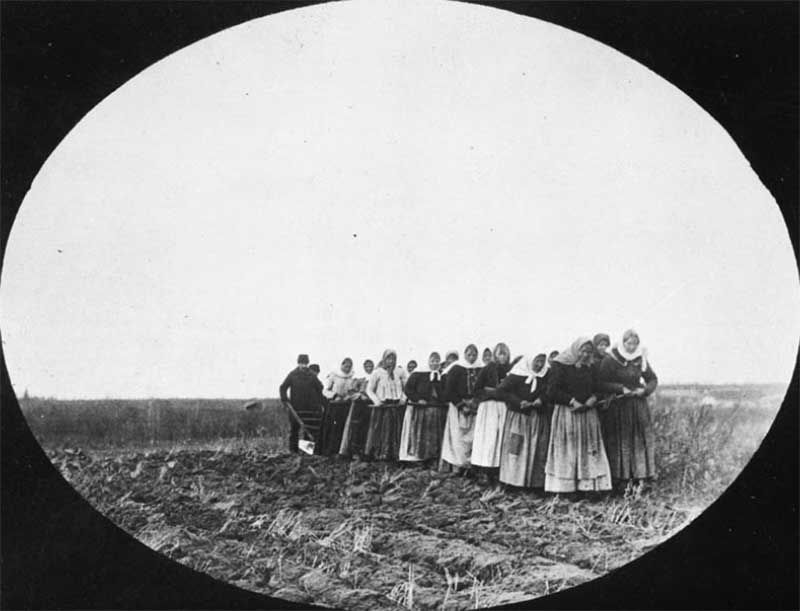
Credit: Library and Archives Canada / C-000681
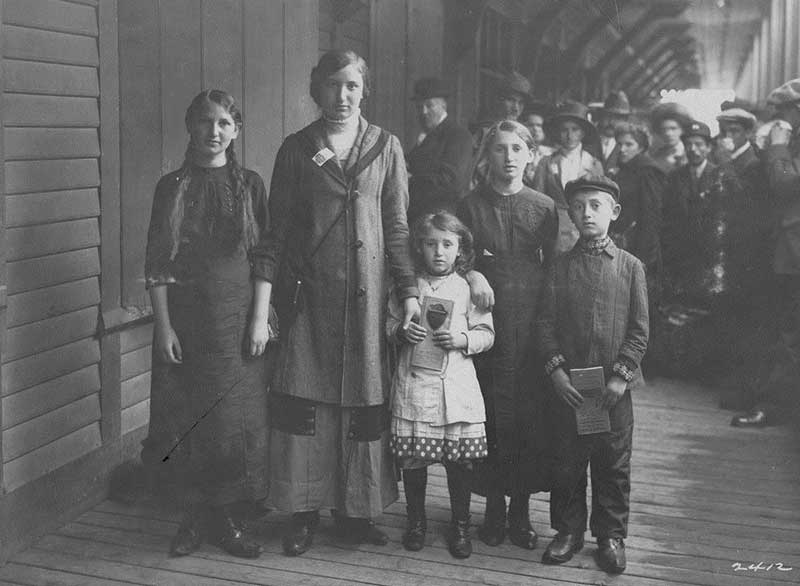
Credit: William James Topley / Library and Archives Canada / PA-010400
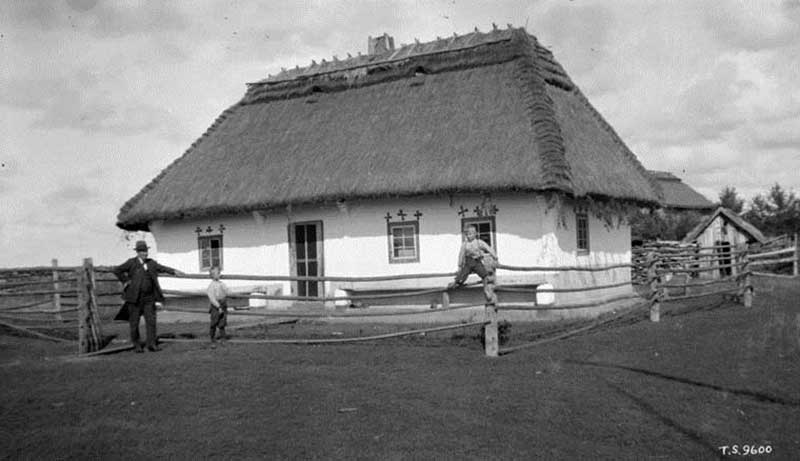
Credit: R.H. Knight / Library and Archives Canada / PA-019823
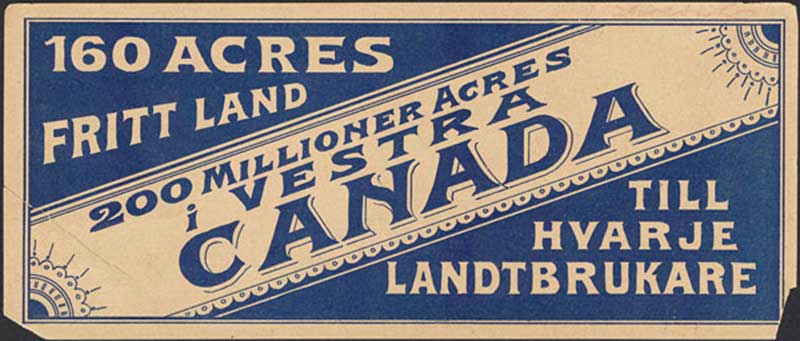
Credit: Library and Archives Canada / C-089542
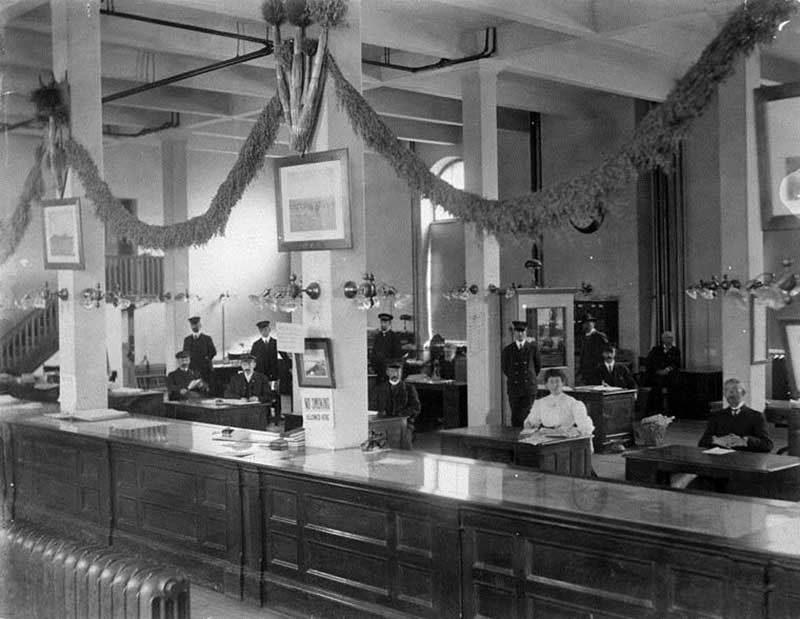
Credit: Library and Archives Canada / C-075993
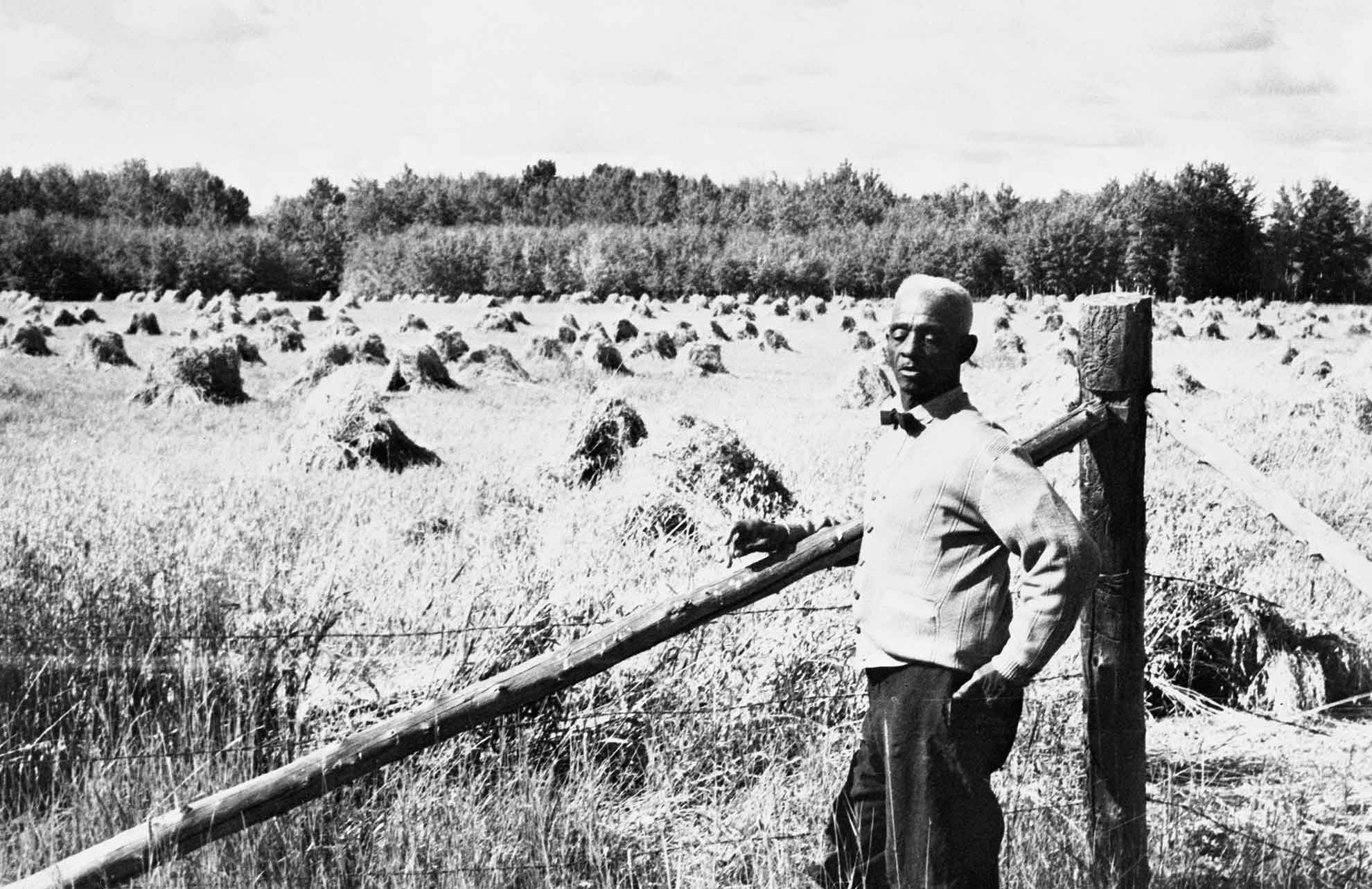
CU1153718/University of Calgary Digital Collections
Bibliography
Primary Sources
Sifton, Sir Clifford. “The Immigrants Canada Wants.” Maclean’s
April 1, 1922
Secondary Sources
Bicha, Karel Denis. “The Plains Farmer and the Prairie Province Frontier,
1897-1914,” Proceedings of the American Philosophical Society,
Vol. 109, No. 6 (Dec. 10, 1965), pp. 398-440.
Francis, Douglas and Howard Palmer, eds. The Prairie West,
Historical Readings. (Edmonton: University of Alberta Press), 1992.
Friesen, Gerald. The Canadian Prairies: A History. Toronto: University of
Toronto Press, 1987.
Knowles, Valerie. Strangers at Our Gates: Canadian Immigration and
Immigration Policy, 1540-2006. Toronto: Dundurn Press, 2007.
Magocsi, Paul Robert, ed. Encyclopedia of Canada’s Peoples. Toronto: University
of Toronto, 1999.
Palmer, Howard. The Settlement of the West. Calgary: Comprint
Publishing Company, 1977.
Patterson, G. James. “Romanians.” In Encyclopedia of
Canada’s Peoples, edited by Paul Robert Magocsi, 1092-1100. Toronto: University of
Toronto Press), 1999.
Swyripa, Frances. Storied Landscapes: Ethno-Religious Identity and the
Canadian Prairies. Winnipeg: University of Manitoba Press, 2010.
Widdis, Randy William. “Saskatchewan Bound: Immigration to a New Canadian
Frontier,” Great Plains Quarterly 12., (Fall 1992): 254-268.
http://digitalcommons.unl.edu/greatplainsquarterly/649
- Gail Hinge, Consolidation of Indian Legislation: Volume II: Indian Acts and Amendments, 1868-1975 (Ottawa: Department of Indian and Northern Affairs, [1978?]), 16. See “An Act to provide for the establishment of ‘The Department of the Interior.’ S.C. 1873, c. 4. (36 Vict.).” https://publications.gc.ca/collections/collection_2017/aanc-inac/R5-158-2-1978-eng.pdf.↩
- Douglas Francis and Howard Palmer, eds. The Prairie West, Historical Readings (Edmonton: University of Alberta Press), 1992, 511.↩
- Sir Clifford Sifton, “The Immigrants Canada Wants,” Maclean’s, April 1, 1922, 16.↩
- Gerald Friesen, The Canadian Prairies: A History (Toronto: University of Toronto Press, 1987), 202.↩
- Randy William Widdis, “Saskatchewan Bound: Immigration to a New Canadian Frontier,” Great Plains Quarterly 12., (Fall 1992): 257. See http://digitalcommons.unl.edu/greatplainsquarterly/649.↩
- G. James Patterson, “Romanians,” in Encyclopedia of Canada’s Peoples, ed. Paul Robert Magocsi (Toronto: University of Toronto Press, 1999), 1094.↩
- Howard Palmer, “Strangers and Stereotypes: The Rise of Nativism, 1880-1920,” in The Prairie West, Historical Readings, ed. Douglas Francis and Howard Palmer, (Edmonton: University of Alberta Press, 1992), 313.↩
- Anne Brydon, “Icelanders,” in Encyclopedia of Canada’s Peoples, ed. Paul Robert Magocsi (Toronto: University of Toronto Press, 1999), 686.↩
- Brigham Y. Card, “Mormons,” in Encyclopedia of Canada’s Peoples, ed. Paul Robert Magocsi (Toronto: University of Toronto Press, 1999), 982.↩
- For context, see Fred Woods, “The Mormons and the Mounties,” Alberta History 61:1 (Winter 2013): 12-21.↩
- Karel Denis Bicha, “The Plains Farmer and the Prairie Province Frontier, 1897-1914,” Proceedings of the American Philosophical Society 109.6, (December 10, 1965), 428.↩
- Finns are not officially classified as Scandinavians, but for the purposes of this report, they have been grouped alongside other Scandinavian peoples because of their cultural, geographic, and historical links.↩
- Christopher S Hale, “Swedes,” in Encyclopedia of Canada’s Peoples, ed. Paul Robert Magocsi (Toronto: University of Toronto Press, 1999), 1221.↩
- Varpu Lindstrom, “Finns,” in Encyclopedia of Canada’s Peoples, ed. Paul Robert Magocsi (Toronto: University of Toronto Press, 1999), 515.↩
- Frances Swyripa, Storied Landscapes: Ethno-Religious Identity and the Canadian Prairies (Winnipeg: University of Manitoba Press, 2010), 89.↩